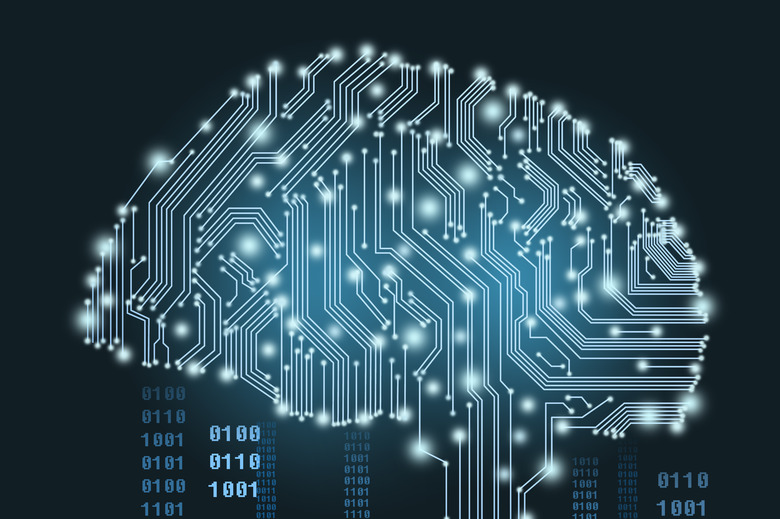Making Better Humans — The Marriage Of Man And Machine
As is often the case, science fiction often precedes what can happen in real life. In 1974, actor Lee Majors starred as test pilot Steve Austin in the television series the "Six Million Dollar Man." Near death after a plane crash, the government put Austin back together with cybernetic body parts that give him super strength and speed, turning him into a cybernetic spy for the government.
The storyline, a dip into science fiction in the 1970s, has become science fact years later as scientists and researchers find ways that allow those paralyzed to gain feeling and muscle control again using neuro chip-based implants. Besides the experiments and studies to help the paralyzed walk again, some researchers are studying ways to merge human and machine intelligence to just make better humans.
Helping the Disabled
Helping the Disabled
Right now, doctors and scientists apply brain-computer interfaces that allow people with disabilities to gain some control back over their bodies and environments. Some of the studies include brain-machine interfaces, a hardware and software communication system that reads specific brain signals to control prosthetics or external computers; neural implants that allow paraplegics to gain control over body movements, and neural bypasses tied directly to electrical stimulators attached to the body to allow a person's thoughts to control their limbs or prosthetics. Much of this technology is still in its infancy, but researchers hope that it will be widely available to those with spinal cord injuries within the next 9 to 14 years.
Oldest Neuro Prosthetic
Oldest Neuro Prosthetic
The oldest neuro prosthetic is the cochlear implant, approved for use in the 1980s by the U.S. Food and Drug Administration. This device works for the deaf, those who cannot hear well or people who have experienced a disease or injury that took away their ability to hear. This brain-computer interface includes a transmitter near the ear that operates electrodes placed in the cochlear. Bypassing damaged areas of the ear, the electrode directly stimulates the auditory nerve to allow hearing.
Side Effects of Brain-Computer Interfaces
Side Effects of Brain-Computer Interfaces
Brain and body implants can also have side effects which can include destruction of the tissue around the implant. Gaming companies also have electrode caps that gamers can use as controllers for game playing. One of the problems associated with this that has scientists worried is how the electrodes can change the brainwaves of the individual using the brain cap controller. If for example, the cap slows the brain waves down, this effect can last much longer than during the game itself. A gamer that uses this technology who then drives a car before his brain recovers may be at risk for slowed reaction times that can lead to car accidents.
Enhanced Humans
Enhanced Humans
Along with repairing those injured, scientists also hope to augment people with technology to make "better" humans. Ideas and studies include adding a language chip to the brain that allows a person to understand a non-native language effortlessly, implants that record memory and experiences for replay, to control epileptic seizures and retinal implants that give you night vision. Besides being able to control prosthetic limbs with a brain-computer interface, studies also suggest the use of this implant to control drones, access the internet or mentally connect and control any number of internet-linked devices.
Cybernetic Humans, Law and Society
Cybernetic Humans, Law and Society
The idea of augmented humans raises multiple questions about the laws governing human brain-computer interfaces (currently there aren't any) as well as the impacts on society. Elective augmentation with technology or brain implants would not be available to those unable to afford the costs, creating a huge chasm between the haves and the have-nots, giving the rich more advantages over the poor when competing for most anything in life.
Other concerns include cybersecurity risks. Imagine an augmented human with super strength and internet computing power taken over by malicious malware or an evil source. This may even be scarier than robots gaining consciousness and trying to destroy humans in a "Terminator" movie-like experience. Repairing people with damaged limbs due to injury or disease with brain-computer interfaces offers a better quality of life to those inflicted. Augmenting humans with computer chips or prosthetics simply to give them an advantage over others raises issues that require a deeper look and maybe even new laws to protect society.
References
- Internet Movie Database: The Six Million Dollar Man
- Duke University: Brain-Computer Interface Based Neuro Prosthetics
- Harvard University: Building Better Human: How Scientists Plan to Merge Man and Machine to Transcend Human Limitations
- Wired: Direct Brain-to-Game Interfaces Worries Scientists
- MIT: Combining Human and Machine Intelligence for Making Predictions
Cite This Article
MLA
Brenner, Laurie. "Making Better Humans — The Marriage Of Man And Machine" sciencing.com, https://www.sciencing.com/making-better-humans-the-marriage-of-man-and-machine-13711534/. 18 June 2018.
APA
Brenner, Laurie. (2018, June 18). Making Better Humans — The Marriage Of Man And Machine. sciencing.com. Retrieved from https://www.sciencing.com/making-better-humans-the-marriage-of-man-and-machine-13711534/
Chicago
Brenner, Laurie. Making Better Humans — The Marriage Of Man And Machine last modified August 30, 2022. https://www.sciencing.com/making-better-humans-the-marriage-of-man-and-machine-13711534/
